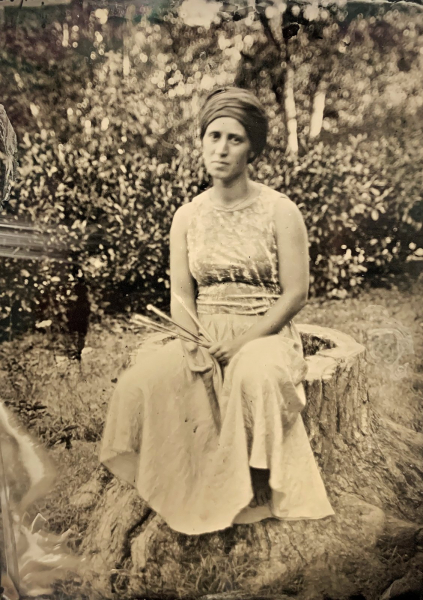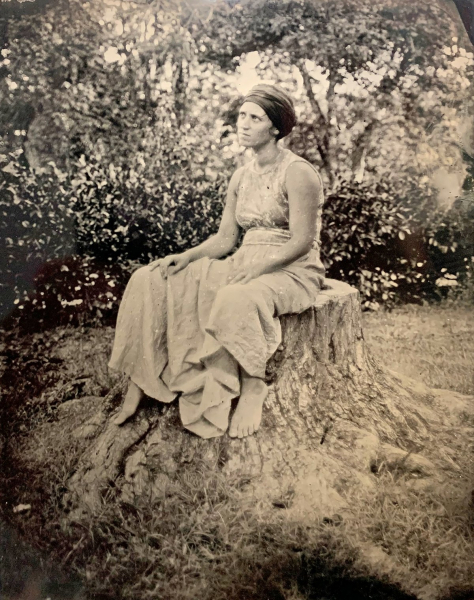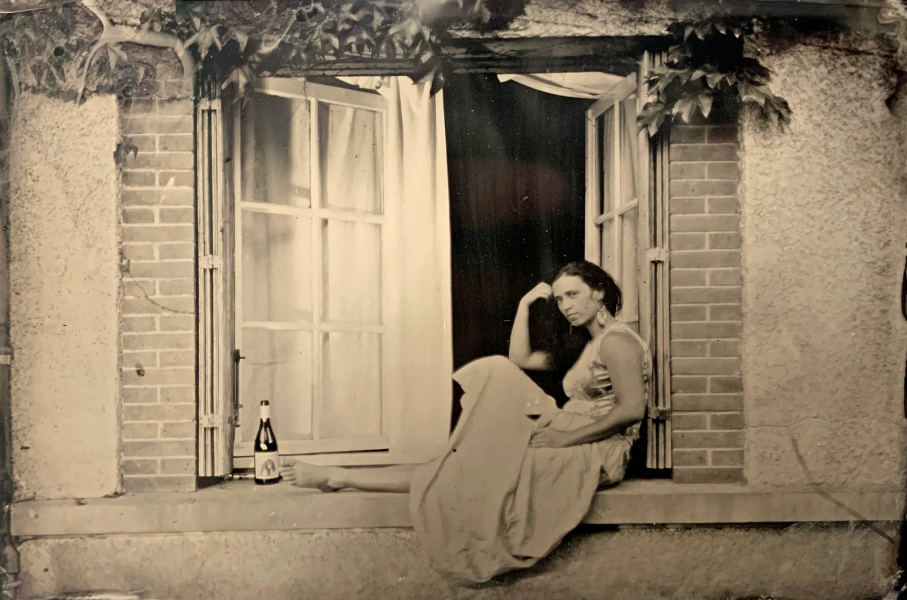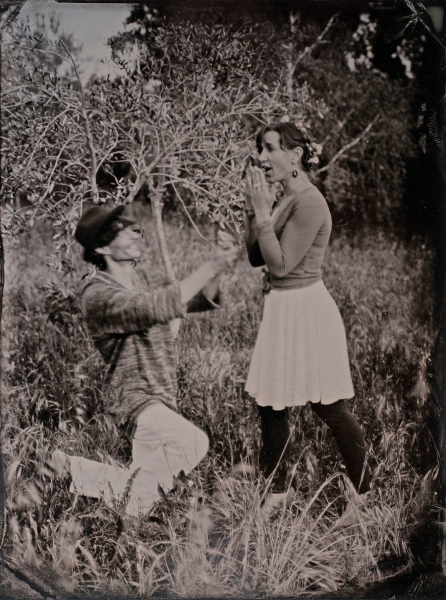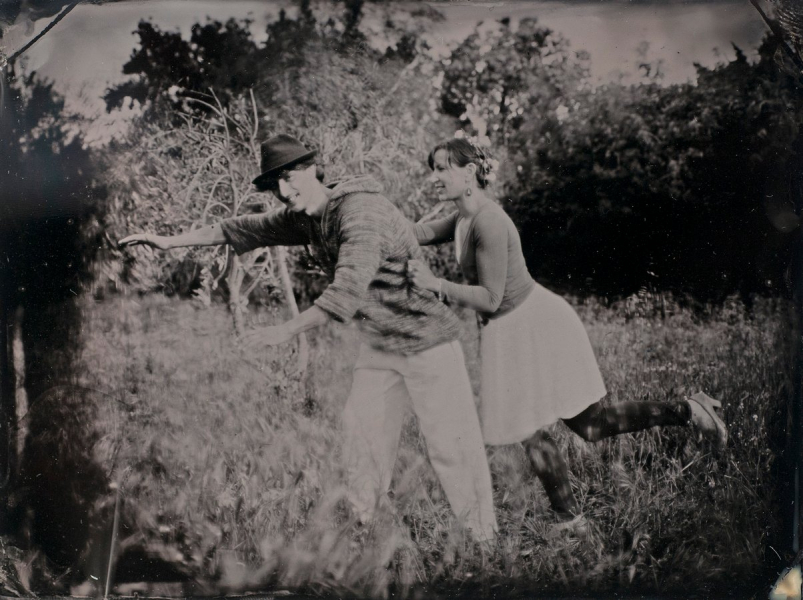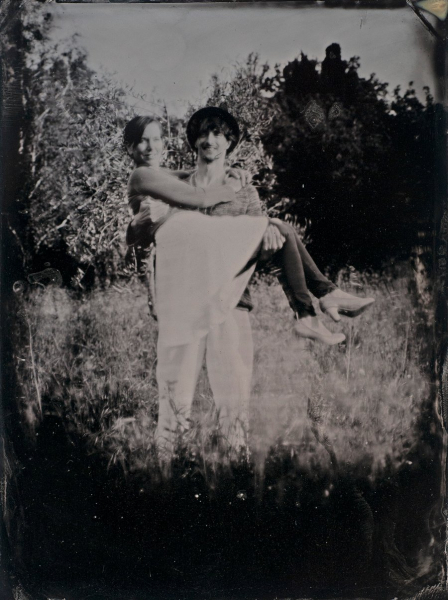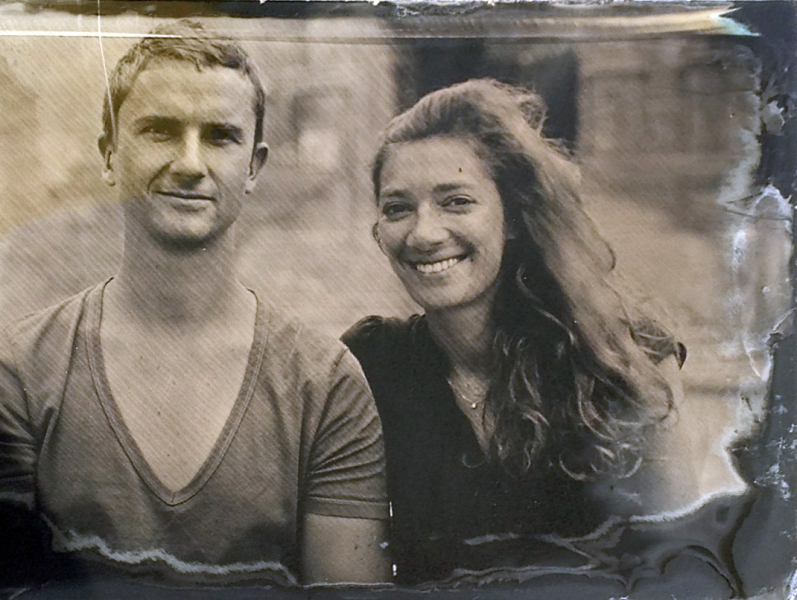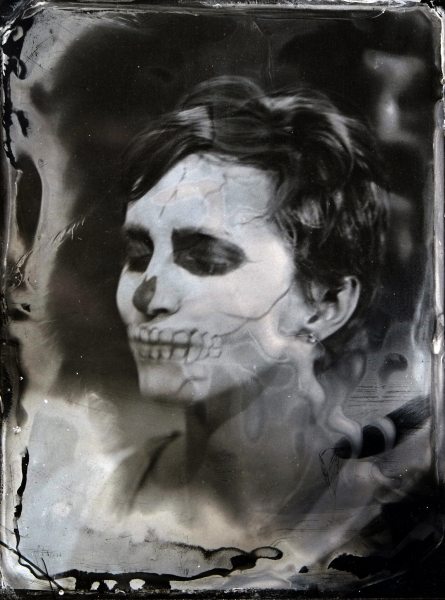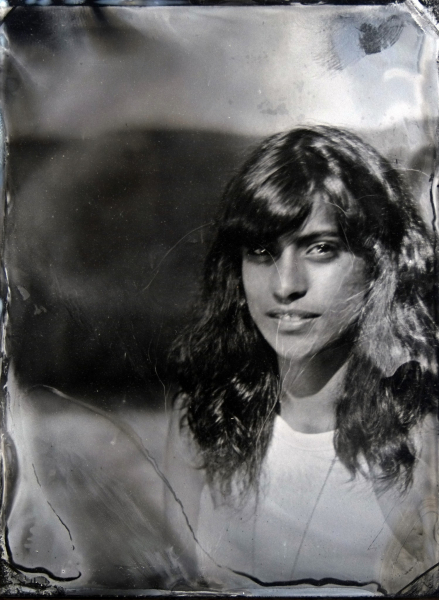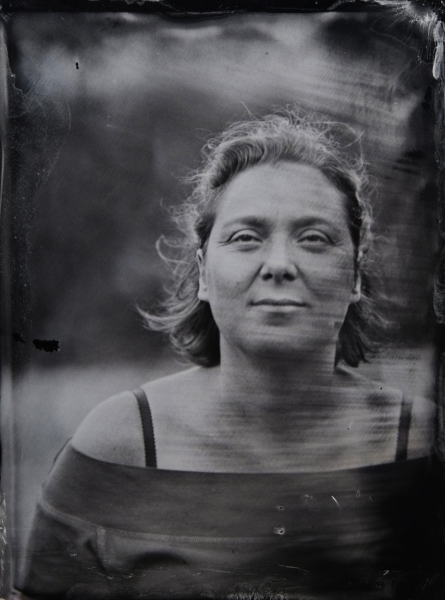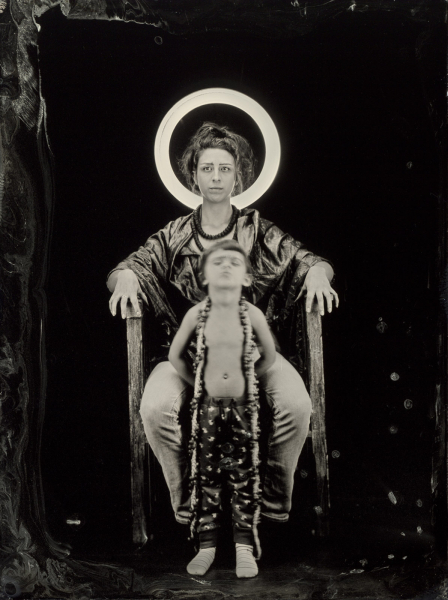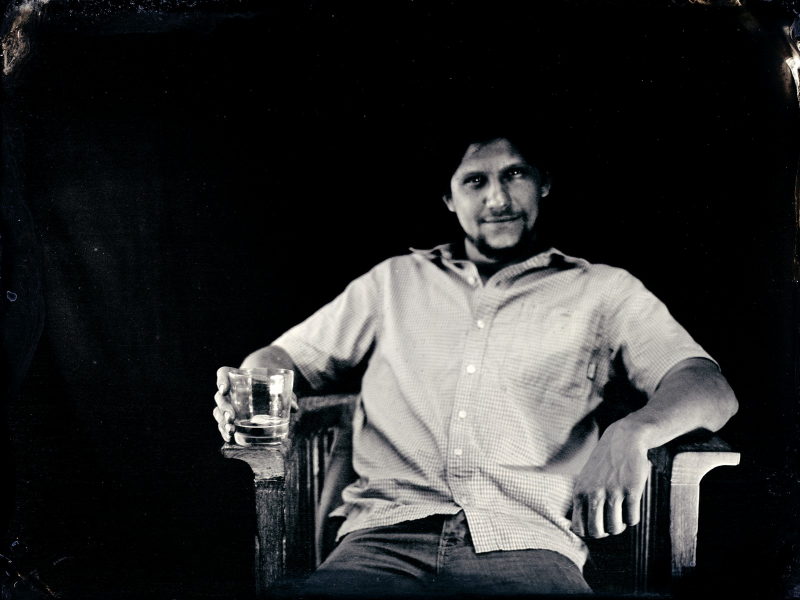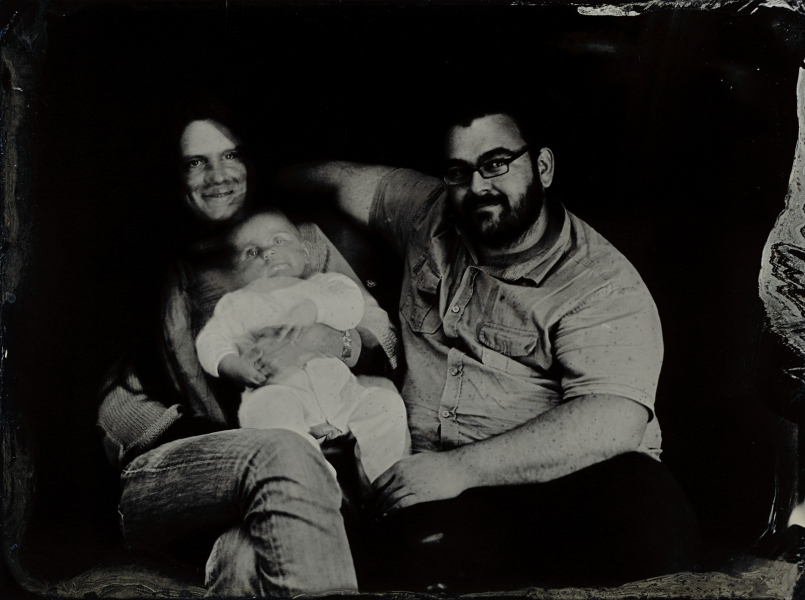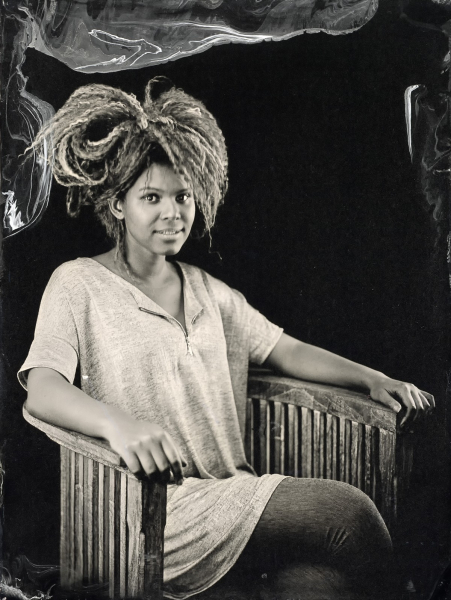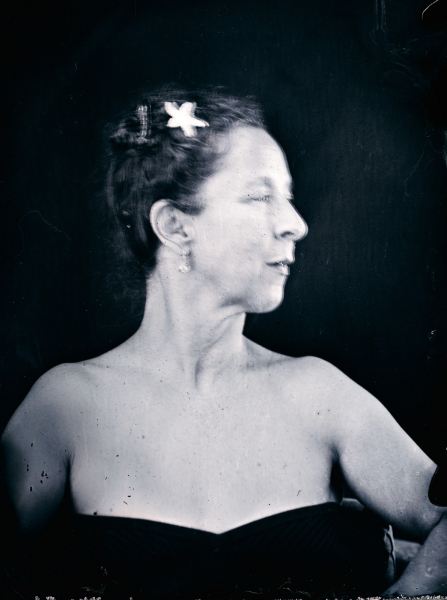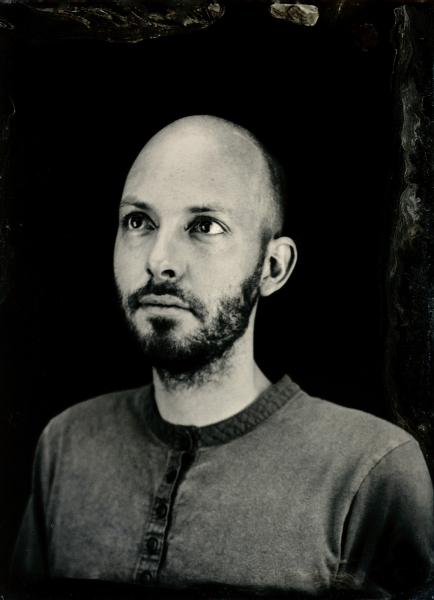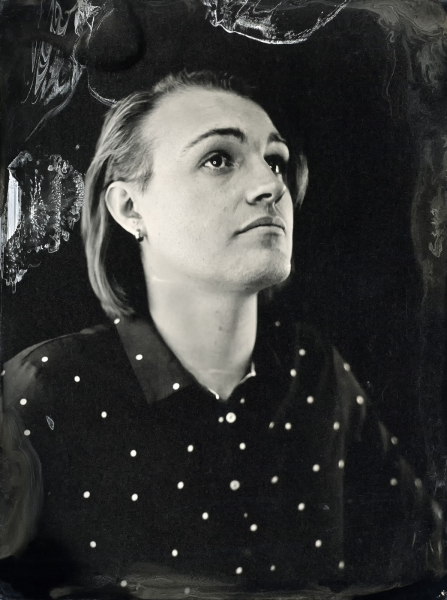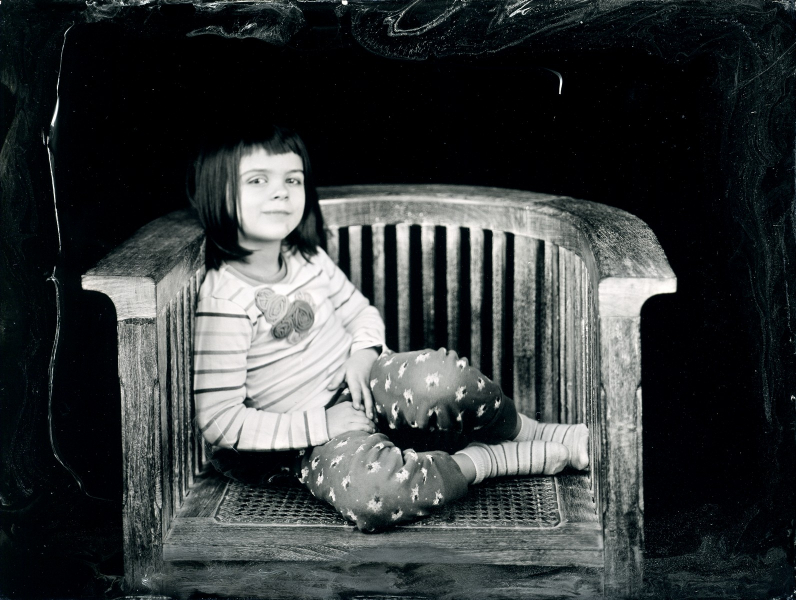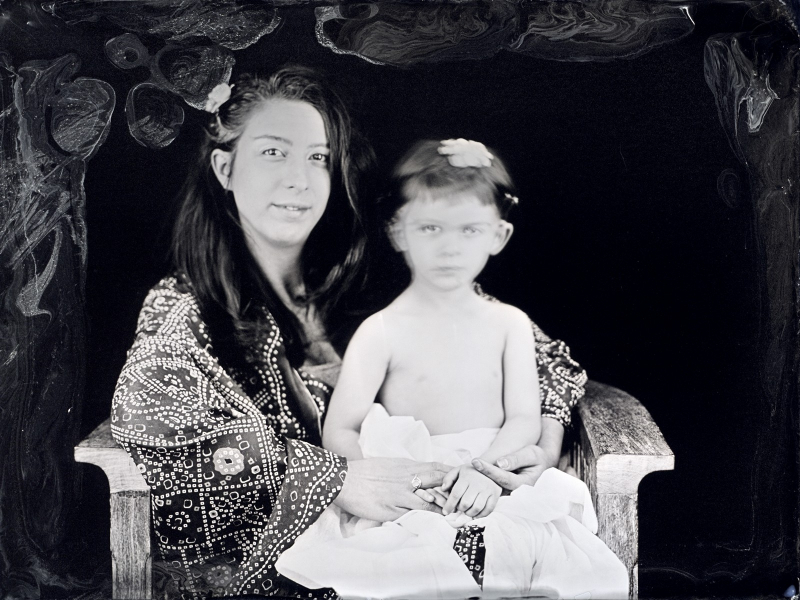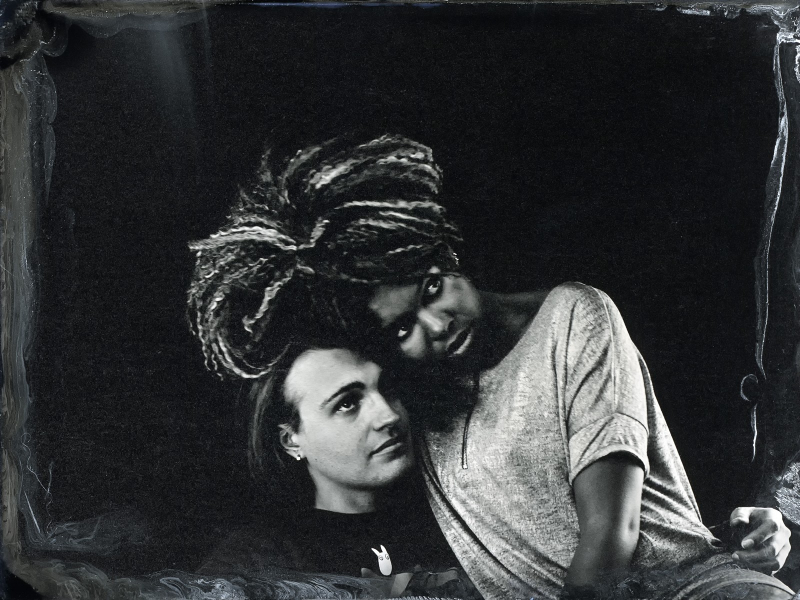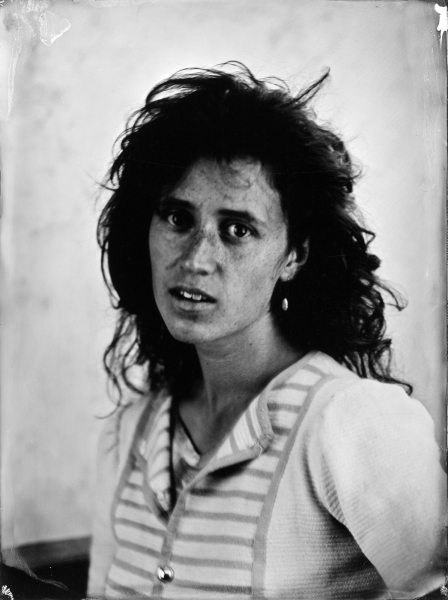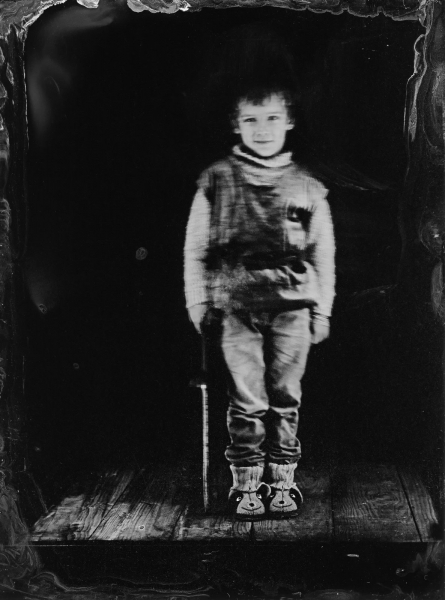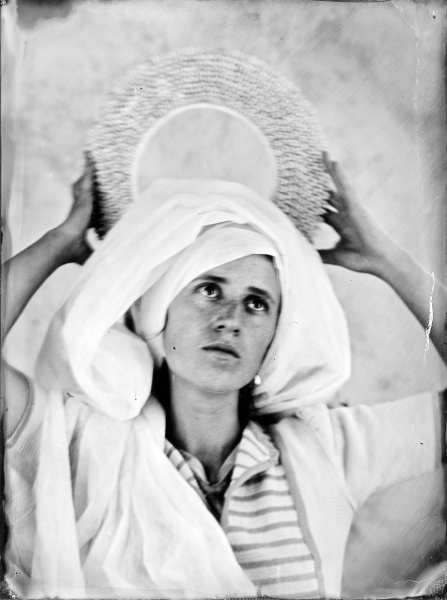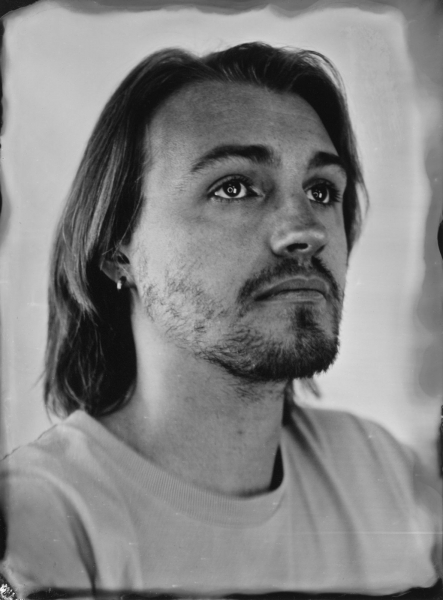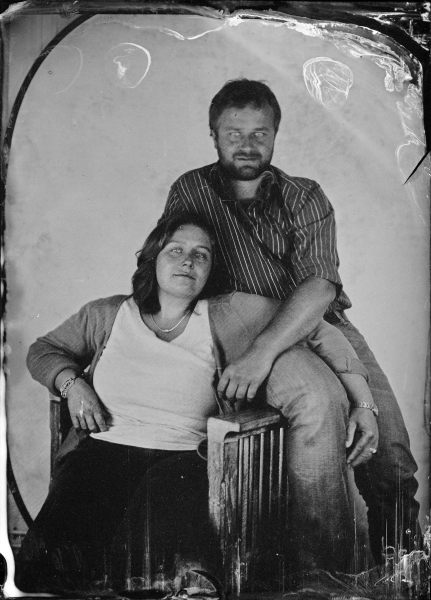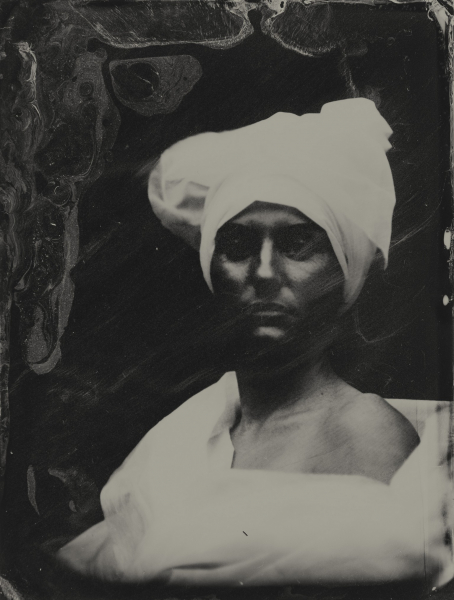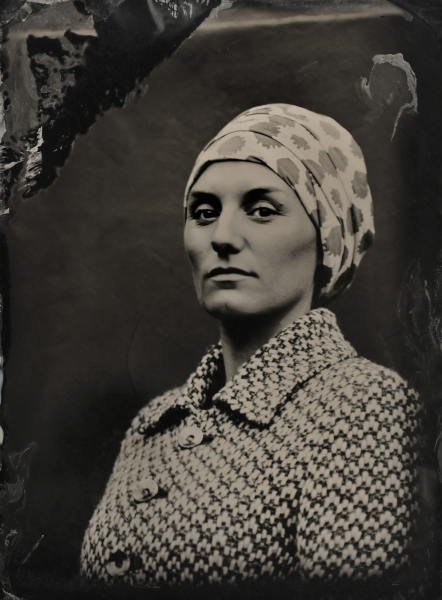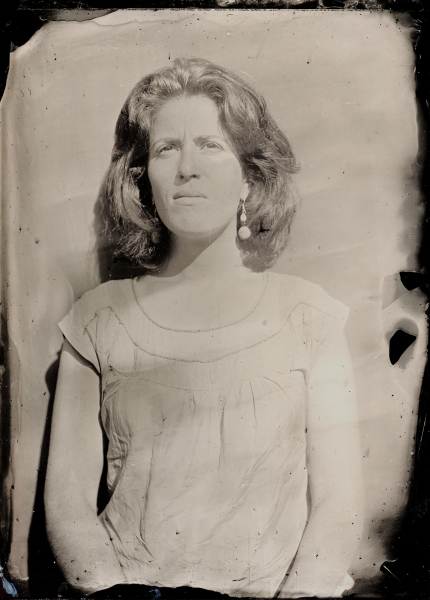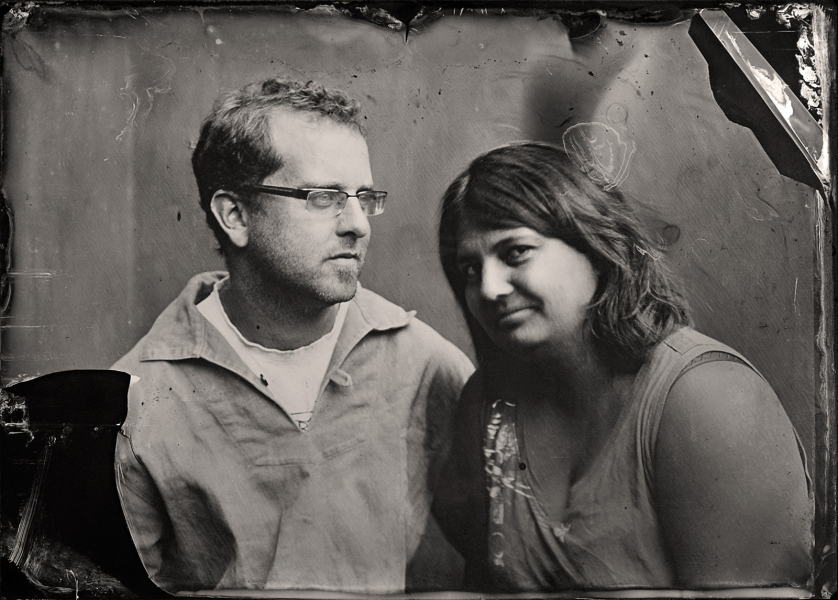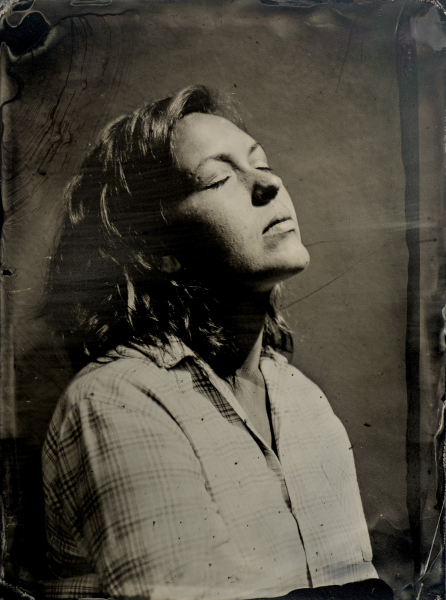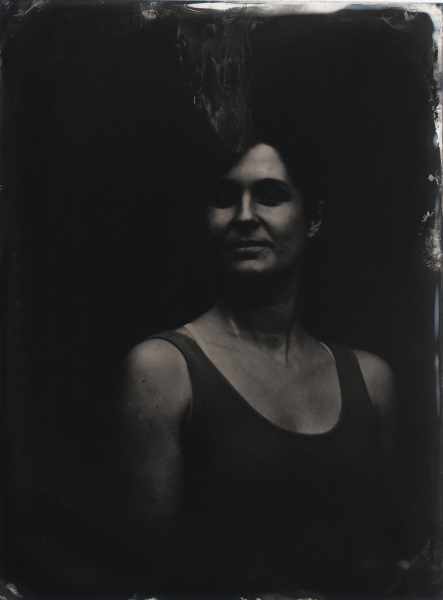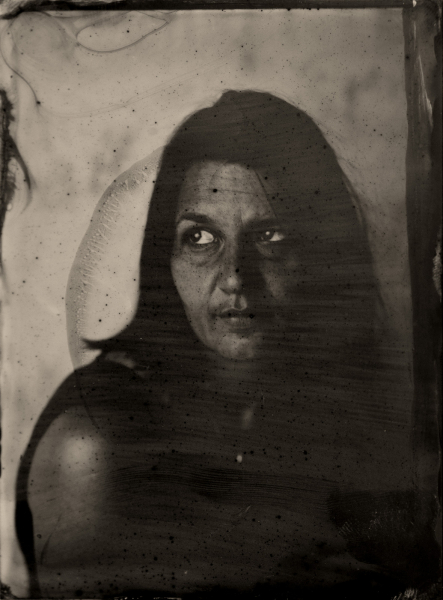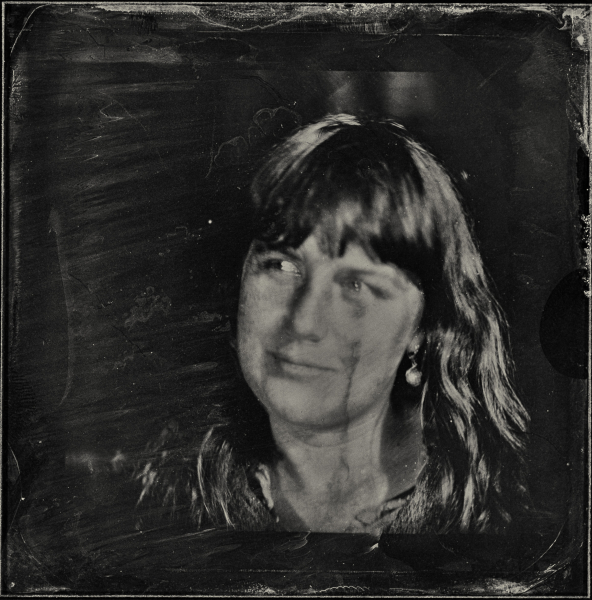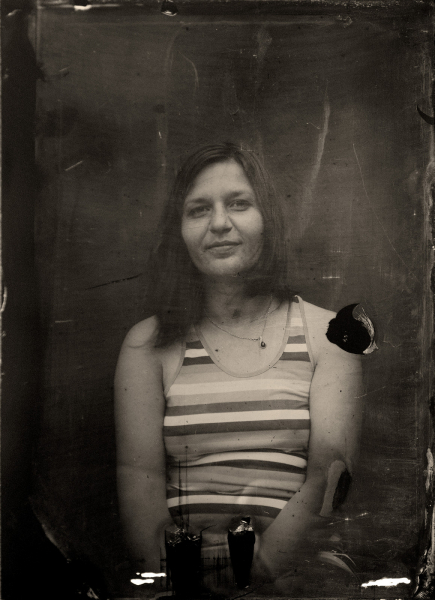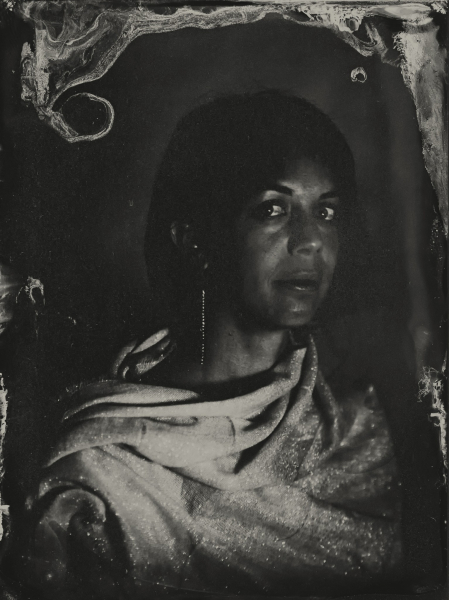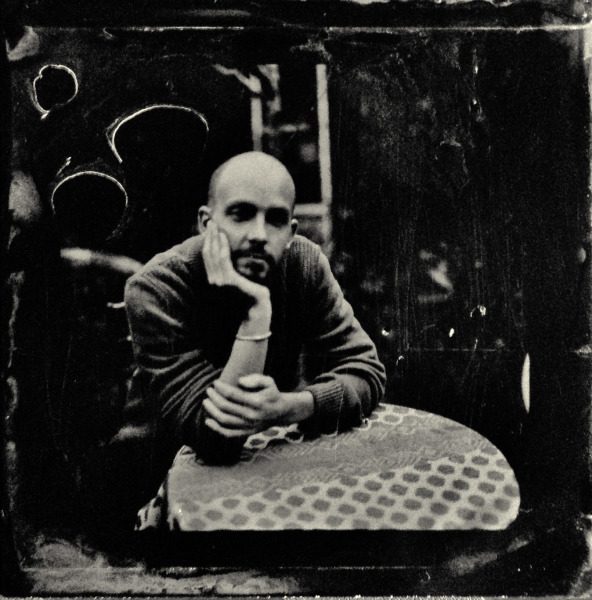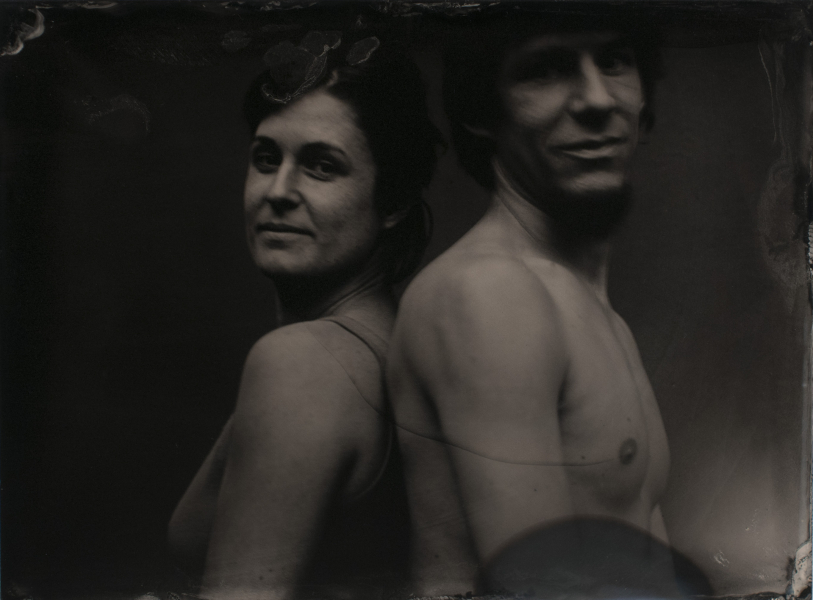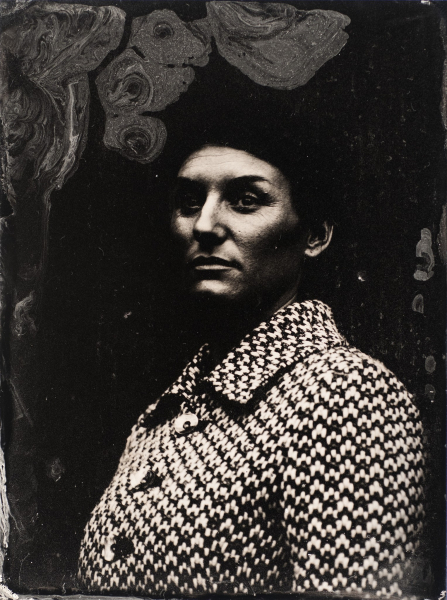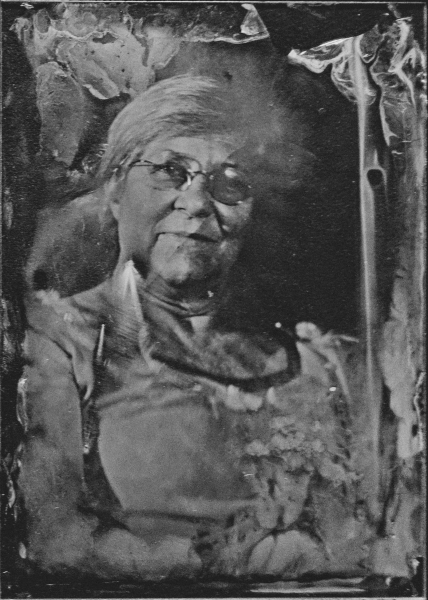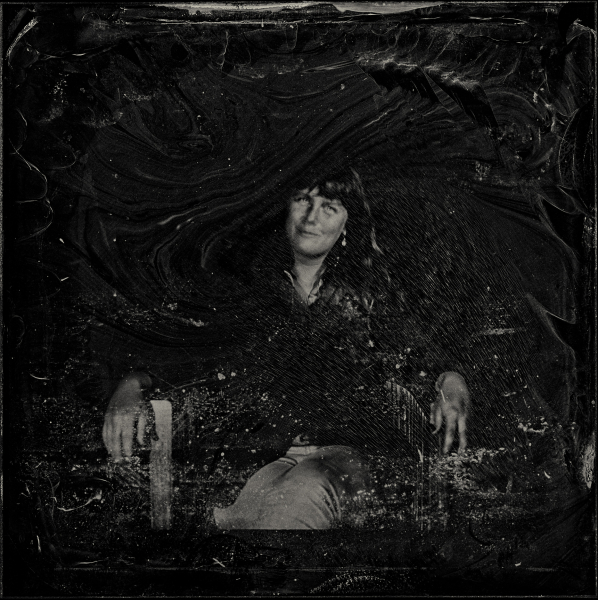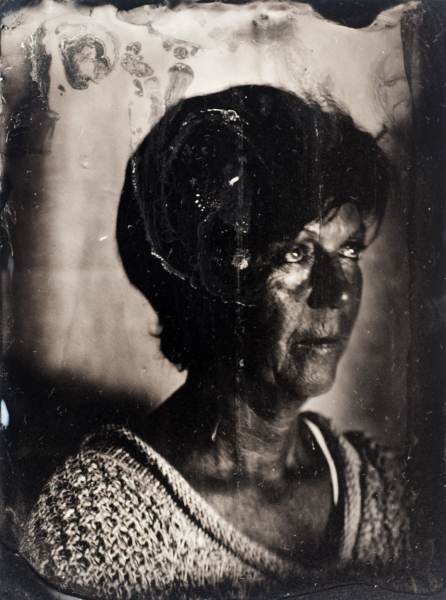Portfolio
I offer wet plate photography at my studio in Moulins, Toulouse or a location of your choice.
I am available for commissions, projects, events and demonstrations.
If you would like to discuss what wet plate photography can offer you, then get in touch using the Contact link.
Example prices for studio portrait tintypes & ambrotypes:
9x12cm: 45€ - 13x18cm: 55€ - 18x24cm: 70€
more information here
Qu’est-ce que le collodion humide ?
La technique du collodion humide, inventée en 1851 par Frederick Scott Archer, photographe britannique, produit un négatif sur verre qui, posé sur un fond noir, devient un positif appelé ambrotype. Elle consiste en une épaisse émulsion liquide appliquée sur une plaque de verre, qui est ensuite plongée dans un bain de nitrate d’argent, puis transférée dans un châssis étanche à la lumière. Les prises de vue se font à la chambre photographique. La photographie au collodion humide exige des manipulations chimiques (pour la préparation de la plaque de verre, le développement, la fixation de l’image…), le transport d’une chambre noire portative (le délai entre la prise de vue et le développement est très court), une rigueur et un soin extrêmes. Mais elle permet d’obtenir une finesse de grain, une précision et une subtilité dans les tons qui a fait son succès jusque dans les années 1880, date de l’apparition des plaques à gélatine sèche.
What is wet plate collodion?
Wet Plate Collodion was the primary photographic method from the early 1850s until the late 1880s.
The entire process, from coating to developing, had to be done before the plate dried. This gave the photographer usually no more than 15 minutes to complete everything. This made it inconvenient for field use, as it required a portable darkroom.
Depending on the support used, the wet-plate process can produce an ambrotype (an image on glass), a tintype (an image on metal plate) or a collodion negative.
Despite its disadvantages, wet plate collodion became enormously popular. It was used for portraiture, landscape work, architectural photography and art photography.
The production of a wet-plate image is very much a “handicraft” and each wet-plate image will inevitably include process artifacts created by variations in the coating of the plate, the length of exposure time, and many other factors. It is, in fact, still used by a number of artists and experimenters, who prefer its aesthetic qualities to those of the more modern gelatin silver process.

